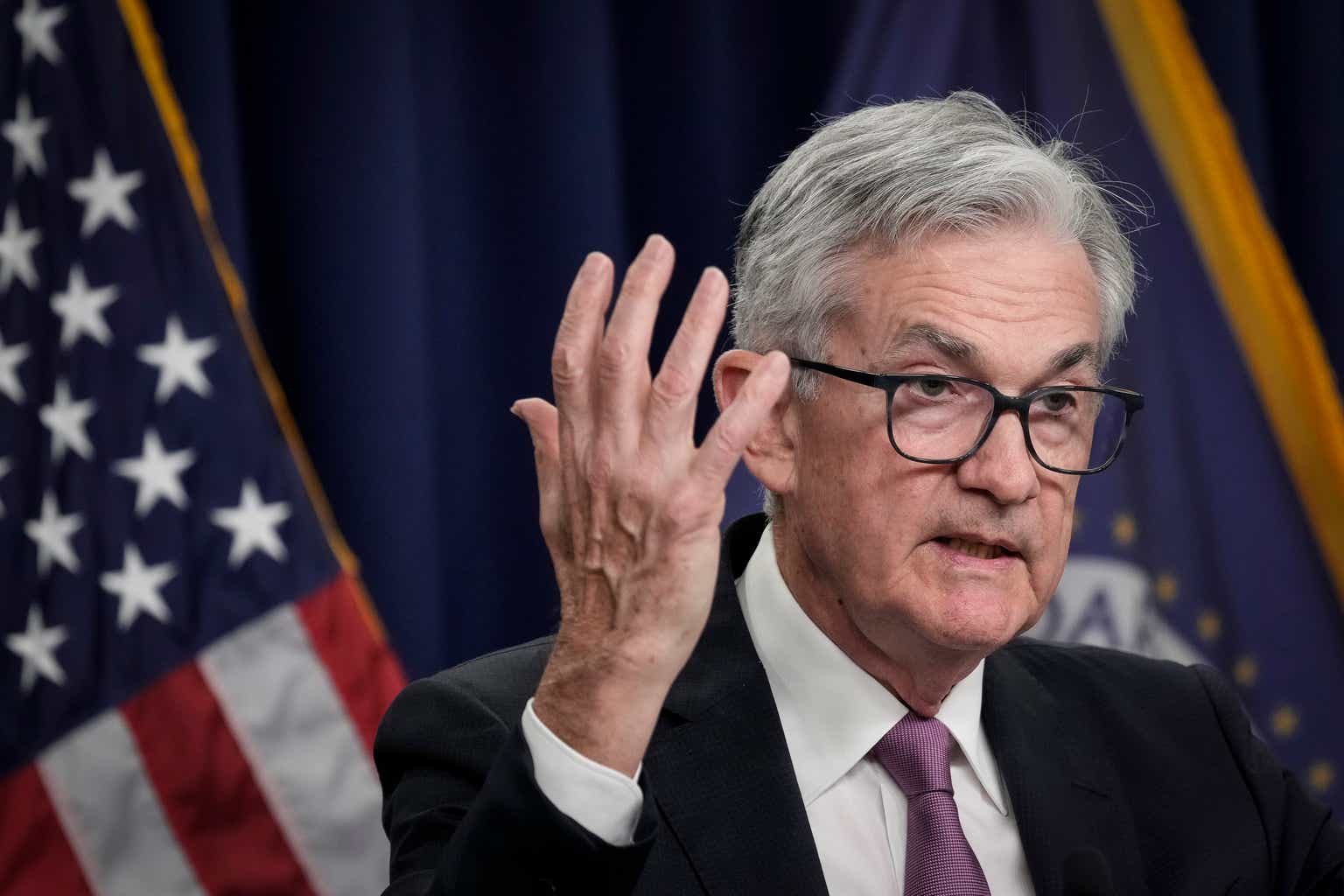“The S&P 500 has been stuck in a bear market–down more than 20 percent from its high–for 221 days. This is the longest such stretch since 1973, surpassing the selloffs that coincided with the bursting of the dot-com bubble in 2001 and the financial crisis of 2008.”
So writes Gunjan Banerji in the Wall Street Journal.
Ms. Banerji adds in another Wall Street Journal article that “Stocks Notch Second Month of Gains.”
Why?
“A stretch of strong earnings from some of the biggest U.S. corporations helped push the S&P 500 higher for the week, notching its second consecutive month of gains.”
One can go back almost a year and not find much loss in the S&P 500 stock index at all. Just take a look.
S&P 500 Stock Index (Federal Reserve)
On April 27, 2022, the S&P 500 closed at 4,184.
On April 28, 2023, the S&P 500 closed at 4, 170.
A little volatility in between, but the trend seems relatively flat.
So, earnings have not been so bad, not as bad as expected.
And, volatility has been declining.
So, according to Ms. Banerji, investors have been looking ahead for positive signals, perhaps the most important coming from the Federal Reserve.
Many investors have been looking all along throughout the winter months for the Federal Reserve to pull a “pivot” from its quantitative tightening.
That optimism still seems to be around.
The narrative now goes this way:
“Some investors say they are in wait-and-see mode ahead of the Federal Reserve’s policy meeting next week. The central bank is expected to raise interest rates at its May meeting, and some investors have been positioning for the central bank to start trimming rates later this year. Those expectations have helped blanket the markets with calm, sending the CBOE Volatility Index to its lowest closing level since November.”
What the Fed is going to do, however, remains a mystery.
The Federal Reserve has stuck with its quantitative tightening program despite the problems being experienced by certain banks. As I wrote this week, even with the failure of some commercial banks and seeming trouble elsewhere, the Federal Reserve has steadily continued to reduce the size of its securities portfolio.
The Fed did, however, supply liquidity to the banking system as it needed it in March as the Fed, the FDIC and the U.S./ Treasury Department dealt with the banking crisis.
However, as I reported in the post just cited, the Fed has removed most of this liquidity as things in the banking industry calmed down and is now ready to move on with, as mentioned above, another small increase in its policy rate of interest at the Fed’s Federal Open Market Committee meeting this week.
Federal Reserve Chairman Jerome Powell continues to state that he is intent on sticking with the quantitative easing and the higher interest rate until the inflation rate does come down to around 2.00 percent
It seems he wants to prove himself on par with former Federal Reserve Chairman Paul Volcker and do all that is necessary to achieve this goal.
Whether he will stick with this target, however, remains the unknown about future Federal Reserve policy.
Many investors believe that he was too afraid of erring on the side of money tightness during the pandemic crisis and so pumped too much money into the banking system.
These investors seem to believe that he will not push too hard on the monetary brakes this time around and that is why they continue to think the Fed will soon pivot from its tight monetary policy.
So, there are still a lot of hopes out there for a “soft landing” of the economy this year.
The year-over-year growth rate for real GDP in the first quarter of 2023 was announced to be 1.6 percent.
The growth rate of real GDP for December 2021 to December 2022 came in at 0.9 percent,
These, obviously, are very weak numbers. But, they are positive.
They do not meet the criteria for a recession.
So, the question is, will the rate of growth of real GDP year-over-year drop further this year, possibly moving into negative territory?
The investment community is not receiving signals that push their thoughts into more negative scenarios. The investors still keep enough of their optimism so that stock prices remain in the tunnel established over the past year.
Unfortunately, too much of the future of the stock market hangs on the shoulders of Mr. Powell and his colleagues at the Fed.
This should not be the way things work.
Read the full article here




